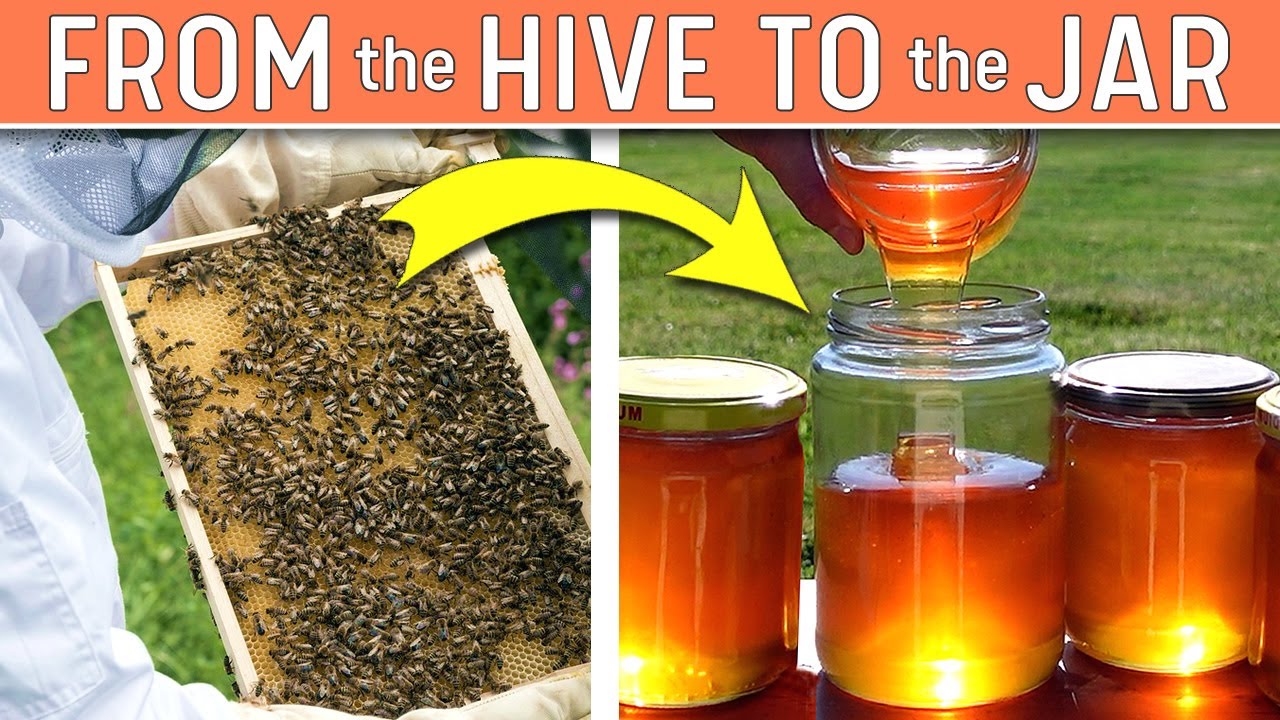
If you’ve ever wondered about the fascinating journey of honey from hive to glass, then this article is for you! Join us as we uncover the captivating process behind incorporating honey into beverages. From its origins in the busy beehive to the sweet and flavorful addition to your favorite drinks, we’ll explore the intricate path that honey takes to bring joy to your taste buds. Get ready to embark on a buzzing adventure!
Hive: The Beginning of Honey’s Journey
The role of bees in honey production
Bees play a vital role in the production of honey. As they gather nectar from flowers, they unintentionally collect pollen on their bodies. By transferring this pollen from one flower to another, bees enable the process of pollination, which is crucial for the reproduction of plants. this intricate dance between bees and flowers ultimately leads to the formation of honey.
Formation and composition of honey
The magical transformation of nectar into honey begins when bees return to their hives and regurgitate the collected nectar. This process involves the addition of enzymes that break down complex sugars into simpler ones. Over time, water in the nectar evaporates, further concentrating the sugars and turning it into a viscous, golden liquid known as honey.
The composition of honey is a complex amalgamation of various natural compounds. This includes simple sugars like glucose and fructose, as well as trace amounts of proteins, vitamins, minerals, and antioxidants. The unique combination of these components gives each honey its distinct flavor and color.
Types of honey and their flavors
Honey comes in a wide variety of types, each with its own flavor profile and characteristics. This diversity is a result of bees foraging on different types of flowers, resulting in the nectar collection from various plants. Some common types of honey include clover, orange blossom, lavender, and acacia honey. Each type boasts a distinctive taste that captures the essence of the flowers visited by the bees during their nectar-gathering missions.
Extraction and Processing: Turning Honeycomb into Liquid Gold
Harvesting honeycombs from beehives
The process of harvesting honeycombs from beehives requires careful handling and expertise to ensure maximum yield and minimum disruption to the bees’ natural habitat. Beekeepers employ different methods such as using smoke to calm the bees before removing the honeycombs. This ensures the preservation of the delicate honeycomb structure while allowing for the efficient extraction of honey.
Methods of honey extraction
Once the honeycombs are harvested, the extraction of honey can begin. There are several methods for honey extraction, including the use of centrifugal force, which involves spinning the honeycomb frames to separate the honey from the comb. Another method is the crush and strain technique, where the honeycomb is crushed, and the honey is filtered out. Each method has its own advantages and is often chosen based on the beekeeper’s preferences and the desired quality of the honey.
Filtering and removing impurities
To ensure a clear and visually appealing product, honey undergoes a filtering process to remove any impurities such as beeswax, pollen, or small particles. Filtering aids in the removal of solids, resulting in a smooth and crystal-clear texture. However, it is worth noting that some honey enthusiasts prefer unfiltered honey for its natural, full-bodied character and potential health benefits associated with the presence of pollen and other particles.
Heating and pasteurization processes
To prevent crystallization and extend the shelf life of honey, heating and pasteurization processes are commonly employed. Heating honey helps dissolve any remaining crystals and improves its texture, making it easier to handle and pour. Pasteurization, on the other hand, involves heating honey at specific temperatures to kill any possible yeast or bacteria that may be present. While these processes are often considered standard practices, some argue that they may affect the nutritional value and natural enzymes present in raw honey.
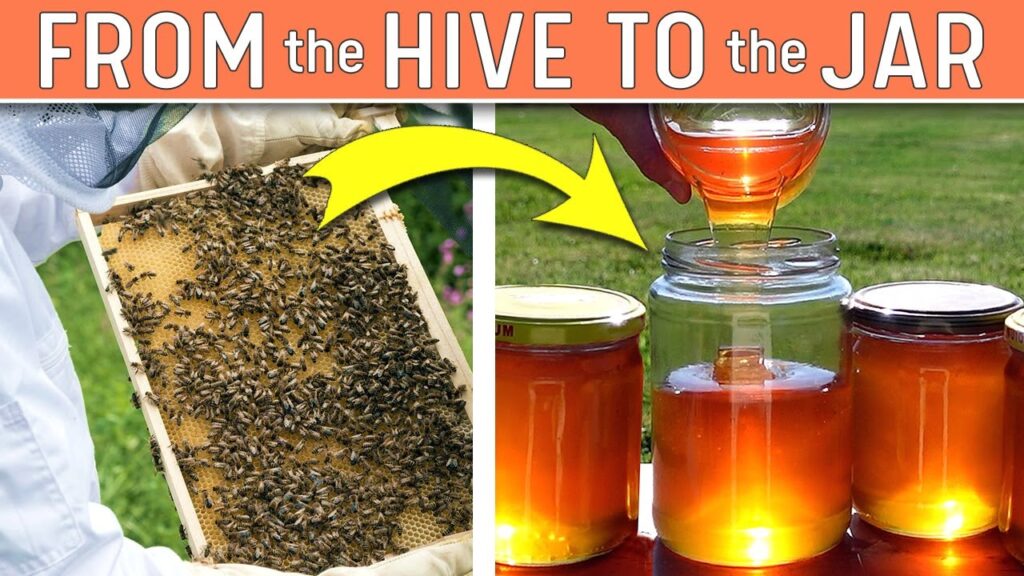
This image is property of i.ytimg.com.
Honey’s Health Benefits: A Natural Sweetener with Added Value
Antioxidant properties of honey
Honey contains a range of antioxidants, which are beneficial compounds that help counteract the harmful effects of free radicals in the body. The antioxidant properties of honey have been linked to reducing the risk of chronic diseases, including heart disease, certain types of cancer, and neurodegenerative disorders. Consuming honey as part of a balanced diet may contribute to overall health and well-being.
Potential antimicrobial and wound healing effects
Throughout history, honey has been recognized for its antimicrobial properties. Its high sugar content, low water content, and acidic pH create an unfavorable environment for the growth of bacteria and other microorganisms. In addition to its antimicrobial properties, honey has been used in traditional medicine to promote wound healing. The combination of its natural sugars and other bioactive compounds is believed to accelerate the healing process and reduce inflammation.
Impact on blood sugar levels
While honey is a natural sweetener, it is important to note its effect on blood sugar levels. Although honey contains simple sugars, it also provides essential nutrients and antioxidants that may have a positive impact on glycemic control. However, individuals with diabetes or those watching their blood sugar levels should consume honey in moderation and consult with a healthcare professional for personalized advice.
Benefits for respiratory health
Honey has long been regarded for its potential benefits in soothing and providing relief to the respiratory system. When taken in warm water or herbal teas, honey can help alleviate coughs and soothe throat irritation. Its natural properties may help reduce inflammation and provide temporary relief from respiratory symptoms. However, it is crucial to remember that honey should not be given to infants under one year old due to the risk of botulism.
Honey in Traditional Beverages: A Global Culinary Heritage
Honey’s historical use in beverages
Honey has a rich history of being used in traditional beverages around the world. Ancient civilizations, such as the Egyptians and Greeks, valued honey for its sweetness and versatility. It was often used as a natural sweetener in various fermented and herbal drinks, as well as in the production of mead, an alcoholic beverage made from fermented honey.
Traditional honey-based beverages around the world
Different cultures have developed their own unique honey-based beverages, each reflecting the local ingredients and traditions. In Japan, “mitsu” is a traditional drink made with honey, water, and often combined with green tea. In India, “sikanji” is a refreshing summer drink made with lemon juice, water, and honey. These are just a few examples of the myriad of traditional honey-based beverages found worldwide, each offering a distinct taste and cultural experience.
Cultural significance and rituals
Honey’s presence in traditional beverages goes beyond its taste and culinary applications. In many cultures, honey holds symbolic meaning and is associated with ceremonies, celebrations, and even religious rituals. The use of honey in these contexts often symbolizes abundance, fertility, and prosperity. These rituals and customs serve as a testament to the deep-rooted cultural significance and reverence for honey as a precious gift of nature.
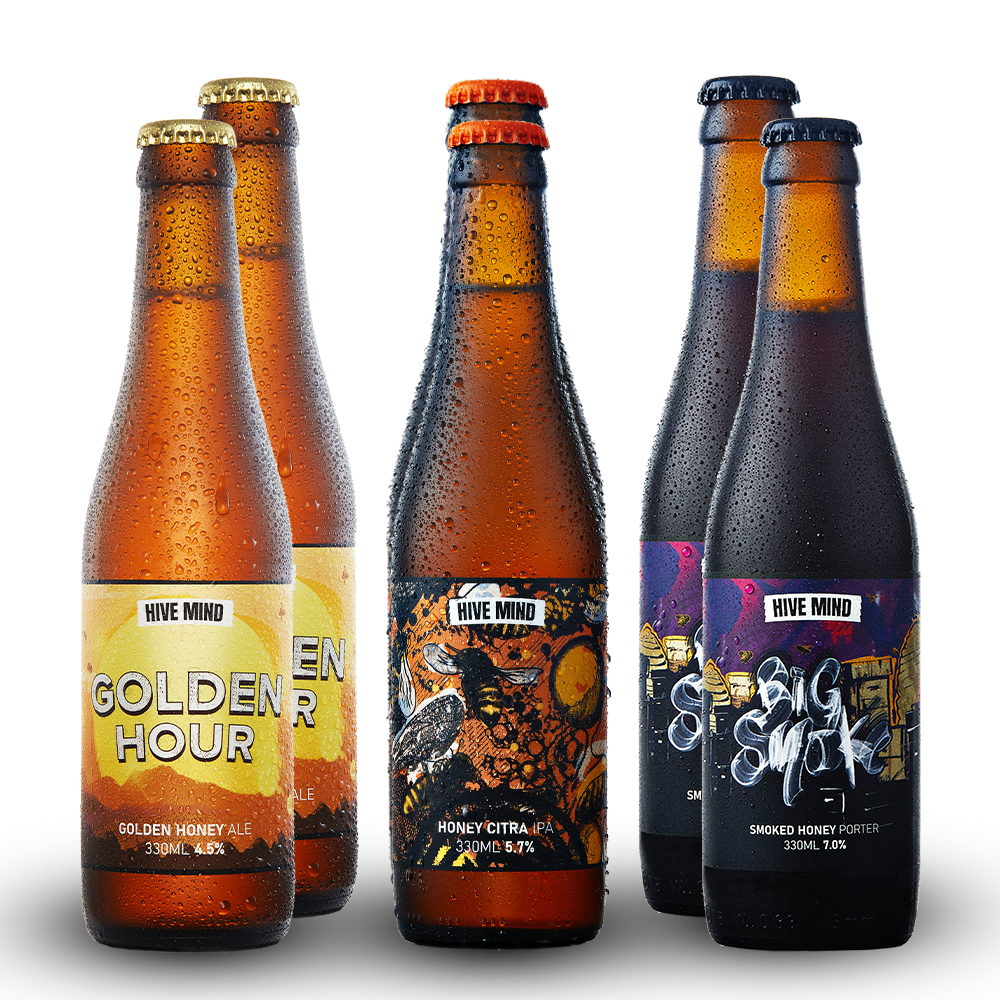
This image is property of cdn.ecommercedns.uk.
Honey Infusions: Adding a Touch of Sweetness
Creating honey infusions
Honey infusions offer a delightful way to introduce new flavors and aromas to the natural sweetness of honey. Creating honey infusions is a simple process that involves gently incorporating various ingredients, such as herbs, spices, fruits, or even flowers, into the honey. The infusion process allows the flavors to meld over time, resulting in a harmonious blend that enhances the original honey’s taste and introduces exciting new dimensions.
Popular flavors and combinations
The world of honey infusions is full of exciting possibilities, with a wide range of flavors and combinations to explore. Some popular honey infusions include lavender-infused honey, cinnamon-infused honey, and lemon-infused honey. These infusions can be used in a variety of culinary applications, such as drizzling over desserts, stirring into tea or yogurt, or even adding a unique twist to savory dishes.
Health benefits of honey infusions
In addition to the distinct flavors they provide, honey infusions can offer additional health benefits depending on the ingredients used. For example, ginger-infused honey can provide soothing properties for digestion, while turmeric-infused honey may have anti-inflammatory effects. Exploring different honey infusions allows for a delightful and health-enhancing culinary journey.
Versatility in cocktails and mocktails
Honey infusions have also found their way into the world of mixology, where they add depth and complexity to cocktails and mocktails. Bartenders and mixologists have embraced honey infusions as a way to incorporate unique flavors and balance sweetness in their creations. Whether it’s a lavender honey Old Fashioned or a refreshing honey lemon mocktail, the versatility of honey infusions enhances the drinking experience and adds a touch of sweetness to every sip.
Honey Liqueurs: Crafting Unique Spirits
Production process of honey liqueurs
Honey liqueurs combine the rich, natural sweetness of honey with the complexity of spirits, resulting in unique and flavorful beverages. The production process begins by infusing honey with various distilled spirits, such as brandy, rum, or vodka. The mixture is then aged and allowed to develop its distinct character and flavor profile. The result is a smooth and luscious liqueur that captures the essence of honey in a delightful way.
Notable honey liqueurs from different regions
Different regions of the world have their own notable honey liqueurs, each with its own story and cultural significance. In Greece, “Ouzo me Meli” blends honey with anise-flavored spirits to create a traditional liqueur enjoyed as an aperitif. Meanwhile, in Poland, “Miód Pitny” is a honey-based mead liqueur with a rich history dating back to the Middle Ages. These honey liqueurs represent the diversity and creativity found in the world of distilled spirits.
Profiles and flavors of honey liqueurs
Honey liqueurs encompass a wide array of profiles and flavors, ranging from sweet and floral to rich and spiced. Some honey liqueurs offer a smooth, velvety texture with subtle notes of caramel and vanilla, while others may have a more robust and fiery character. The distinct flavor profiles make honey liqueurs perfect for sipping neat, adding complexity to cocktails, or even as a drizzle over desserts for a touch of indulgence.
This image is property of images.squarespace-cdn.com.
Honey-based Fermented Beverages: Natural Fermentation at Work
Introduction to honey-based fermentation
Honey-based fermentation is a process that transforms honey into delightful fermented beverages. The most well-known honey-based fermented beverage is mead, often referred to as the “drink of the gods.” Mead is made by fermenting honey with water and sometimes additional ingredients such as fruits or spices. This ancient beverage has been enjoyed for centuries and continues to captivate enthusiasts with its rich history and diverse variations.
Traditional Mead production and variations
Traditional mead production involves fermenting a mixture of honey and water with the help of yeast. The yeast consumes the sugars in the honey, converting them into alcohol. The final flavor profile of mead varies depending on factors like the types of honey used, yeast strains, fermentation techniques, and any additional ingredients added during the brewing process. From dry and crisp to sweet and fruity, the possibilities for mead variations are endless.
Exploring other fermented honey beverages
Beyond mead, there is a vast world of fermented honey beverages waiting to be explored. Honey wines, also known as pyments, combine honey and grapes to create unique wine-like beverages. Braggot is another intriguing variation that blends honey with malted grains, resulting in a beverage that combines the characteristics of beer and mead. These fermented honey beverages showcase the versatility of honey as a fermentable ingredient and offer a taste experience that is truly one-of-a-kind.
Honey as a Sweetener: Transforming the Modern Beverage Industry
Honey as a natural alternative to refined sugar
In recent years, there has been a growing trend towards natural and healthier sweeteners, and honey has emerged as a popular alternative to refined sugar. Unlike processed sugar, honey retains its natural nutrients and offers a range of flavors that can enhance the taste of beverages. This shift towards using honey as a sweetener reflects consumers’ desire for more natural and sustainable options in their beverages.
Honey’s role in enhancing flavors
One of the unique qualities of honey is its ability to enhance the flavors of other ingredients. Whether it’s a spoonful of honey in a cup of tea, a drizzle of honey over fresh fruit, or a splash of honey in a cocktail, the natural sweetness and complex flavor profiles of honey can elevate the taste experience. Honey’s diverse range of flavors allows for endless possibilities in creating beverages that are both delightful and nuanced.
Incorporating honey in different beverage categories
Honey’s versatility extends beyond traditional tea and coffee sweeteners. With its wide range of flavors, it can be incorporated into various beverage categories, including juices, smoothies, sparkling water, and even craft sodas. From floral and fruity infusions to rich and velvety flavors, honey adds depth and complexity to beverages, making them more enjoyable and satisfying.
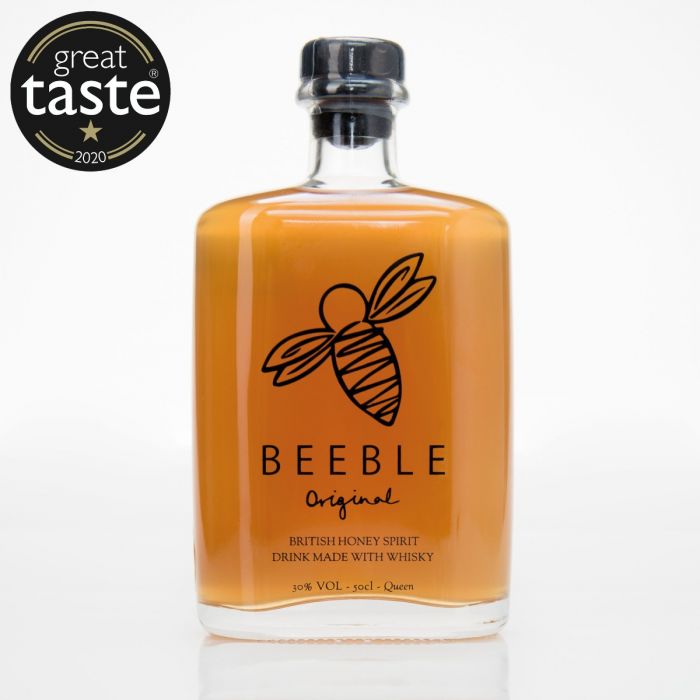
This image is property of www.vinotopiawine.co.uk.
Challenges and Considerations: Utilizing Honey in Beverages
Managing honey’s viscosity and texture
One challenge in utilizing honey in beverages is managing its natural viscosity and texture. Honey has a thick consistency, which can sometimes be difficult to incorporate evenly into liquids. Proper mixing techniques and potentially diluting honey with a small amount of warm water can help achieve a smoother integration. Balancing the desired viscosity while preserving the beverage’s overall texture is an important consideration for beverage manufacturers and mixologists alike.
Preserving the integrity of honey’s nutrients
Although heat treatment and pasteurization processes are commonly applied to honey, there is ongoing discussion regarding their impact on the preservation of honey’s nutrients and enzymes. Some argue that excessive heat may diminish the potential health benefits of honey. To address this concern, alternative processing methods, such as cold extraction or minimal heating, are being explored to preserve the integrity of honey’s nutrients.
Balancing sweetness and avoiding overwhelming flavors
Honey’s natural sweetness can greatly enhance beverages, but finding the right balance is crucial. Overwhelming the flavors with excessive sweetness can mask other ingredients and result in an unbalanced beverage. It’s essential to carefully consider the intended taste profile and adjust the honey quantities accordingly to achieve the desired balance of flavors.
Sustainable sourcing and supporting bee populations
As the demand for honey grows, it becomes increasingly important to prioritize sustainable sourcing practices. Ensuring the well-being of bee populations and their habitats is crucial for maintaining a healthy ecosystem and safeguarding the future of honey production. Supporting ethical beekeeping practices and choosing suppliers committed to sustainability can contribute to the preservation of bee populations and the long-term availability of this precious natural resource.
Future Trends: Innovations and Beyond
Growing popularity of honey-infused drinks
The popularity of honey-infused drinks is expected to continue growing in the future. Consumers are increasingly seeking out natural and artisanal products, and honey-infused beverages align well with this trend. The versatility and unique flavor profiles offered by honey infusions make them appealing to a wide range of consumers looking for exciting and flavorful beverage options.
Exploring honey in functional beverages
With the growing interest in functional beverages that offer health benefits, honey is poised to play a significant role. The natural antioxidants, antimicrobial properties, and potential health benefits of honey make it a valuable ingredient in functional drinks designed to support overall well-being. From honey-infused herbal teas to honey-enhanced wellness shots, the incorporation of honey into functional beverages adds both taste and functional value.
Creative collaborations and unique honey combinations
As the beverage industry continues to seek innovative and distinctive flavors, collaborations between beekeepers, mixologists, and beverage manufacturers are likely to flourish. These collaborations can lead to exciting new combinations and unexpected flavor profiles that showcase the diversity of honey. By exploring different honey varietals, regional specialties, and even honey from specific floral sources, the possibilities for creating unique and exceptional beverages are endless.
In conclusion, honey’s journey in beverages is a fascinating tale that spans from the humble hives to the glasses of consumers around the world. From its role in honey production to its potential health benefits and array of flavors, honey has proven to be a versatile sweetener and a cherished ingredient in traditional and modern beverages alike. The future holds even more exciting possibilities as honey-infused drinks gain popularity, and innovative collaborations and combinations push the boundaries of creative beverage making. So, the next time you indulge in a honey-infused beverage, take a moment to appreciate the journey that brought that golden sweetness to your glass. Cheers to the remarkable world of honey in beverages!
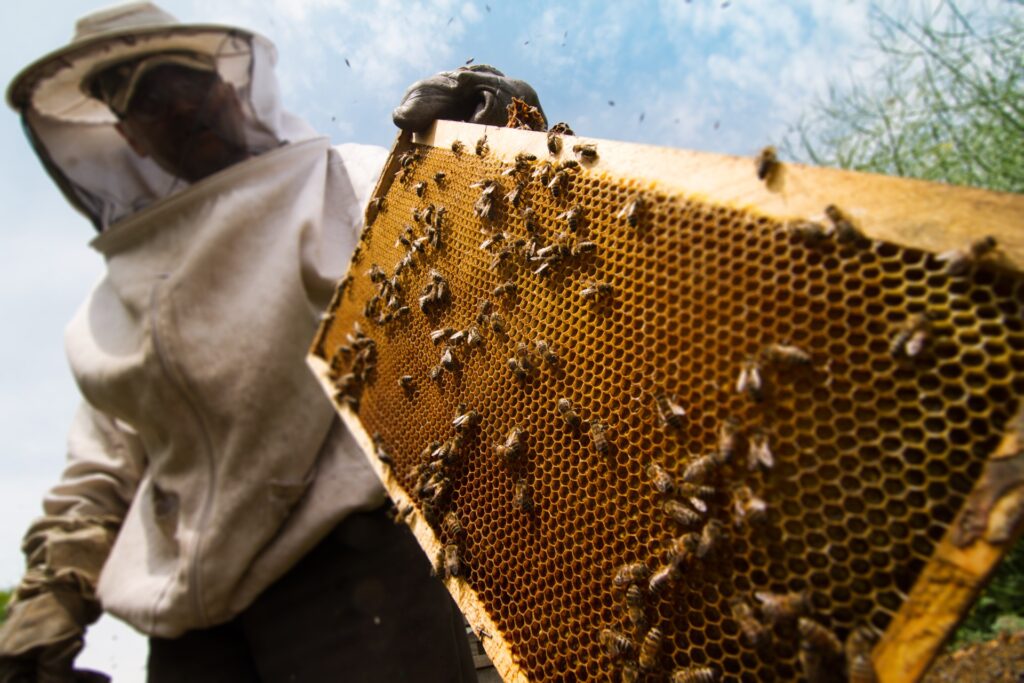
This image is property of www.fb101.com.
